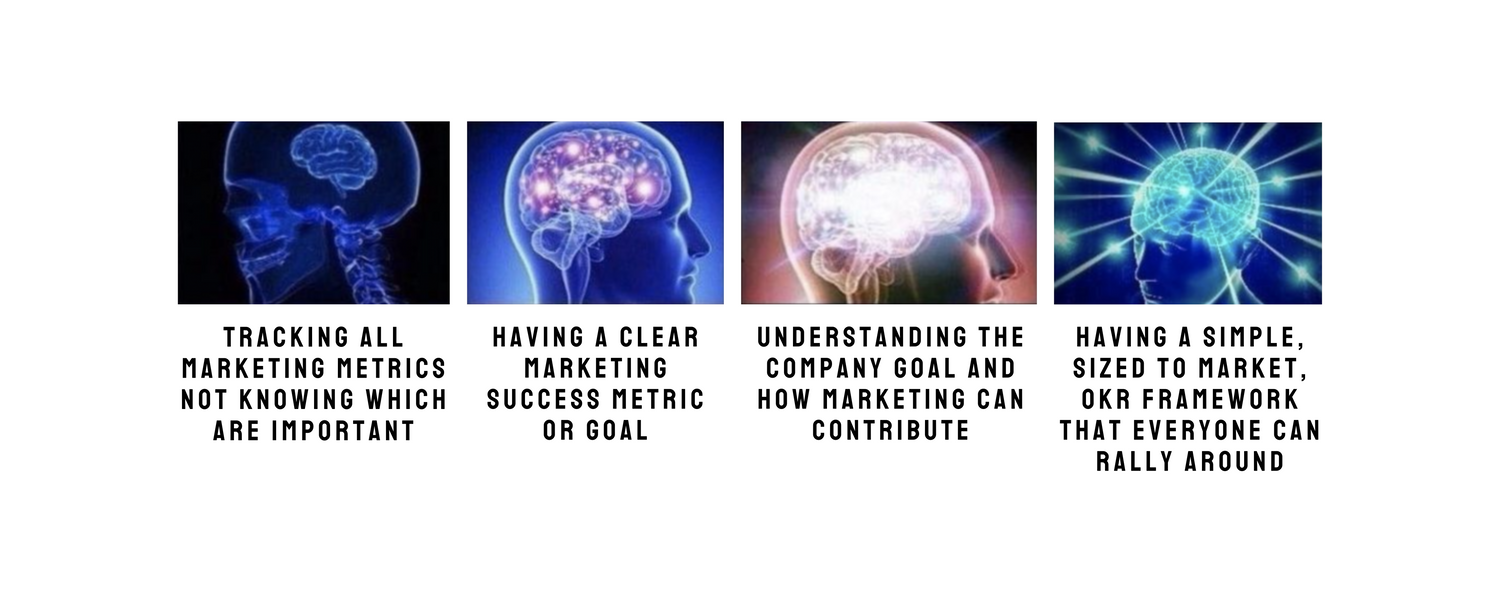Who you should involve when setting up OKRs
 By
Becky Madden
·
2 minute read
By
Becky Madden
·
2 minute read
Don’t want too many cooks, but want your OKRs to be well integrated with all teams or departments?
You’re in luck - follow this framework and you’ll be singing from the top of OKR mountain.
Why is this so important?
Your sales team will be focussed on contact rates, sales conversion and revenue.
Your finance team will be focussed on OPEX, EBITDA and ‘the jaws’.
Your product team will be focussed on UX, features launched, bugs and errors.
Your marketing team will be focussed on brand tracking, campaign outcomes and MQLs.
So how do you go about taking all of these points of view and satisfying them all into a clean and simple set of Key Results?
Hot Tip: the answer is not to avoid these teams and pull OKRs together in a silo and just expect them to follow the finished product.
Or worse try and retrofit their plans to fit into the square peg you’ve just designed.
Executing this well also depends on the size of your company.
Small businesses have the luxury of everyone fitting in the meeting room and hashing it out together over lunch.
Large companies with complex hierarchies and team structures unfortunately need to take a more layered or filtered approach.
Either way, the key to successfully designing and implementing OKRs is having the right people in the room at each step.
If you need to be careful how many cooks you’re inviting, try the below framework as a guide and think through what this might look like in your company’s structure (this isn’t designed to be a one-size fits all, add your flavour):
Step 1: Ensure you’re clear on the businesses’ purpose and mission.
Who should be involved:
Small Company: Everyone
Medium Company: Management team
Large Company: C-Suite
Step 2: Identify or re-align on your businesses’ core (SMART) Objective
Who should be involved:
Small Company: Everyone
Medium Company: Management and Team leads
Large Company: C-Suite & Department Heads
Step 3: Identify or re-align on the ~3 Key Results that your data tells you are highly correlated with your Objective
Who should be involved:
Small Company: Everyone
Medium Company: Management, team leads, your data guru or other relevant SMEs
Large Company: C-Suite & Department Heads, Data Lead and other relevant SMEs
Step 4: Share your OKR framework in draft form for feedback, blocker identification and other insights.
Who to filter down to:
Medium & Large Companies: Each team usually has the high performer or the long-standing employee who has incredible depth of knowledge in their patch and intersections with other business areas - these are the types of folks to include at this point.
Step 5: Have each team take the draft OKRs and think through their own macro metrics that will help them identify leading and lagging indicators of tracking towards each KR
Who to involve:
Everyone - approach on a team or area of expertise basis
Step 6: Come back together in your initial group to review and iterate where blockers or insights have been raised before implementing your OKRs company-wide.
Who should be involved:
Small Company: Everyone
Medium Company: Management team
Large Company: C-Suite
Hot Tip: Having well-consulted OKRs is brilliant - but don’t set and forget. Once everyone is using them consistently you may realise one of your KRs isn’t correlating with your Objective as you’d thought. Or data blockers are preventing one of the teams from accurately demonstrating their contribution. Or, market conditions change and you need to pivot quickly to stay relevant. It’s an always-on, iterative process.
Subscribe for a monthly blog wrap-up!
If you or your company needs coaching on marketing strategy to hit objectives, I'm here to help.
Let's connect to chat about your needs.



